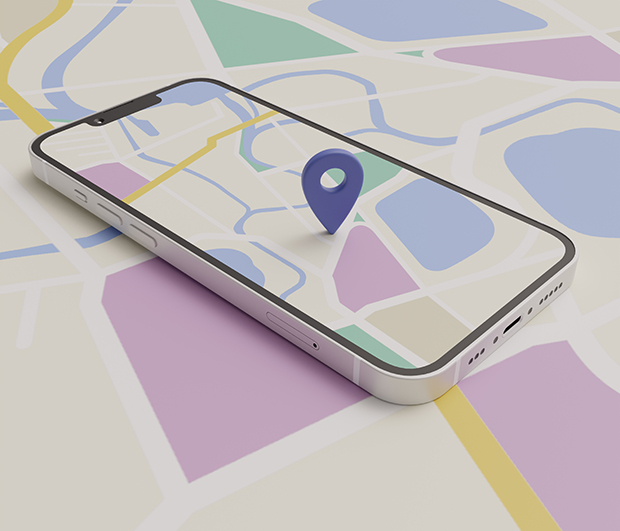Geofencing 101: Making Your Business Visible in the Right Places
In today’s era, companies are always on the lookout for ways to connect with their target audience. A popular marketing approach that has been gaining attention is geofencing. By utilizing geofencing, businesses can make use of location-based targeting to reach customers. In this post, we will delve into the fundamentals of geofencing and discuss how it can enhance your business’s visibility.
What is Geofencing?
Geofencing, a technique involving the creation of boundaries around a geographic area using GPS, Wi-Fi, or RFID technology, has revolutionized targeted marketing strategies. Once these boundaries are set, businesses can leverage them with the expertise of a geofencing marketing company to send timely messages to customers within that defined vicinity. Through the use of push notifications, individuals receive tailored messages on their devices as they enter or leave the designated area, enhancing the precision and effectiveness of location-based marketing campaigns.
How Does Geofencing Function?
When a consumer carrying a device enters an area set by a business, they prompt a geofenced reaction. This reaction triggers the dissemination of personalized content tailored to their location on their device. Whether it's giving out a promo code, announcing an event in the area, or sharing useful details about the products and services offered at that specific store – geofencing allows businesses to provide exactly what potential customers are looking for at the perfect moment.
Advantages of Geofencing for Businesses
Targeting Specific Locations
Geotargeting empowers businesses to customize their marketing messages for users in the targeted areas. By targeting based on geography, businesses can reach individuals who are most likely to be interested in their offerings.
Boosted Foot Traffic and Sales
With a well-planned geofence strategy, businesses can attract visitors to their physical stores by sending personalized promotions directly to nearby consumers. This can lead to increased conversion rates and sales.
Improved Customer Interaction
Sending localized and contextually relevant messages allows businesses to connect with customers in a personal manner. Geofencing enables the delivery of tailored content that stands out amidst marketing efforts, enhancing the shopping experience and making it more memorable.
Real-Time Insights
Another benefit of geofencing is the ability to gather data on customer behavior, foot traffic trends, and preferences. Businesses can utilize this data to drive their decision-making processes and enhance their
Key Strategies for a Geofencing Campaign
Establish Clear Objectives
Before initiating your geofencing campaign outline your goals. What are you aiming to accomplish through this campaign? Whether it's increasing foot traffic, boosting sales, or gaining customer insights, defining objectives will shape the direction of your geofencing approach.
Refine Your Targeting
For successful geofence campaigns, set up clear targeting rules. Understand your audience's habits and preferences to accurately choose geofence locations. The key to a successful campaign is reaching people at the right moments.
Tailor Your Messaging
Develop engaging messages tailored specifically for users within your areas. Use language that resonates with the community and addresses their needs and interests directly. Consider incorporating deals or exclusive promotions to further captivate their attention.
Timing Matters
Focus on delivering messages when potential customers are most receptive—such as on weekends, holidays, or during nearby special events.

Privacy Considerations in Geofencing
While geofencing offers significant benefits for businesses, it's important to consider privacy implications when implementing such technology. Here are some key factors to keep in mind:
Transparency
Be transparent with your customers about your geofencing practices. Clearly communicate why you collect location data and how it will be used. Provide an opt-in option that allows users to control whether or not their location is tracked.
Anonymization
When collecting location data, ensure that it is anonymized and cannot be tied back to individual identities. This helps protect the privacy of your customers while still providing valuable insights for your business.
Data Security
Safeguard user location information by implementing robust security measures. Encrypt the data during transmission and storage to prevent unauthorized access to sensitive information.
Enhanced Permissions
Allow users to specify their preferences and set granular permissions regarding geolocation tracking. Empower individuals by giving them control over how their personal data is utilized.
Conclusion
Geofencing offers an opportunity for businesses looking to stand out in today’s market. By using location-based targeting features and following best practices for creating geofence campaigns, businesses can improve their customer engagement and see an increase in foot traffic and sales. When exploring the potential of geofencing for your business, remember to keep your messages clear, concise, and infused with a touch of creativity. Continuously test, analyze, and optimize your campaigns to ensure success in getting your business noticed in all the places.
Copyright © . All Rights Reserved
